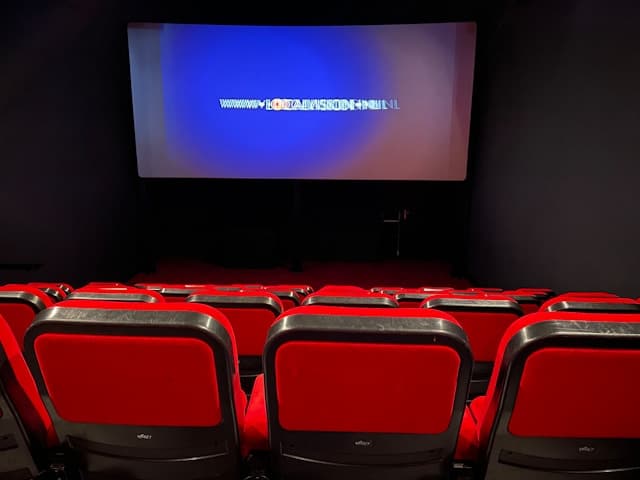What’s the Best Way to Soundproof a Home Cinema Room for Maximum Audio Impact?

When it comes to creating the perfect home cinema room, audio quality is at the forefront of most home theater enthusiasts’ minds. However, achieving the optimum sound isn’t simply about investing in a high-end sound system. There’s another critical factor that demands your attention: soundproofing. The best sound systems in the world will fail to deliver the desired impact if your room isn’t adequately soundproofed.
Soundproofing doesn’t just block out external noise; it also prevents the sound from your theater from disturbing others. It enhances the acoustic quality of your room, ensuring that every note, dialogue, and sound effect is heard with crystal clarity.
Cela peut vous intéresser : What Is the Best Method for Installing Underfloor Heating in a Retrofit Project?
In this article, we will explore the best techniques to soundproof your home cinema room. We’ll delve into the critical areas of your room, from the wall, ceiling, to the floor, and discuss how the right materials can enhance your audio experience.
Acoustic Panels for Walls and Ceilings
Your cinema room’s walls and ceilings are the first areas to address when it comes to soundproofing. Bare walls and ceilings can reflect sound waves, causing echoes and distortions that can degrade your audio experience.
Lire également : How Can You Create a Luxurious and Relaxing Spa Bathroom in a Small Space?
Acoustic panels are an excellent solution to this issue. These panels consist of a noise-absorbing material that absorbs sound waves instead of reflecting them. They are available in various sizes and can be easily installed on walls and ceilings.
In terms of material, you have a wide array of choices, but one of the most effective is dense foam. This material is excellent at absorbing low to high-frequency sounds, providing an even, balanced sound in the room.
For the walls, strategically place these panels at reflection points, usually the spot directly opposite your speakers. For the ceiling, place them above your seating area to absorb sound waves that would otherwise bounce back and forth between the floor and ceiling.
Insulation for Walls and Ceilings
While acoustic panels are great at absorbing sound waves, they cannot block the sound from entering or leaving the room. That’s where insulation comes in. By adding insulation to your walls and ceiling, you create a barrier that can effectively block sound waves.
For the walls, you can use soundproofing insulation batts, which are similar to the insulation used in your home’s exterior walls. These batts are made of fiberglass or mineral wool and are specifically designed to block sound waves.
For the ceiling, a suspended ceiling with acoustic tiles can be an effective solution. These tiles have a high noise reduction coefficient (NRC), meaning they can absorb a significant amount of sound.
Soundproofing the Floor
The floor of your cinema room warrants the same attention as your walls and ceiling. The sound can transmit through the floor, especially if you have a room below your theatre. Also, footsteps on a hard floor can generate noise that can interfere with your movie experience.
If your cinema room has a hard floor, consider laying a thick, plush carpet. This will not only reduce the noise from footsteps but also absorb sound waves. If you want to go a step further, consider laying a layer of soundproofing underlayment beneath the carpet. This material is designed to absorb and block sound, providing an extra level of soundproofing.
Acoustic Treatments for Seating
Seating is another crucial aspect of your home cinema that can affect your room’s acoustics. The material of your seats can reflect sound waves, creating echo and distortion.
Leather is a popular choice for home cinema seating due to its high comfort level and luxurious look. However, if not correctly treated, it can reflect sound waves. A great solution is to go for acoustic recliners, which are specifically designed to absorb sound.
Octane Seating, for example, offers a range of leather recliners that use special sound-absorbing foam in their construction. These seats not only offer supreme comfort but also improve your room’s acoustics.
Using Soundproofing Materials for Doors and Windows
Finally, consider the doors and windows of your cinema room. These parts of the room can allow sound to leak in or out, disrupting your movie experience.
For doors, opt for solid core doors instead of hollow ones. These doors are denser and therefore more effective at blocking sound. Consider adding a door sweep to the bottom of the door; this will seal the gap and prevent sound leakage.
For windows, consider installing double-glazed windows, which consist of two glass panes with a gap in between. This gap acts as a sound barrier. Additionally, heavy, dense curtains can further absorb sound and prevent it from escaping.
In conclusion, soundproofing your home cinema room involves taking a holistic approach, considering every aspect of the room. Only then will you be able to fully experience the richness and depth of sound offered by your high-end sound system.
Bass Traps for Low-Frequency Sound Absorption
When setting up your home cinema, it’s important not to overlook low-frequency sounds. These are the deep, rumbling bass sounds that give your movies and music that extra punch. These low frequency sounds can cause unwanted vibrations and echoes if not properly managed. The solution to this problem lies in the utilisation of bass traps.
Bass traps are designed to absorb low-frequency sound waves, preventing them from reverberating around your home cinema room. They’re typically placed in the corners of rooms, where low-frequency sound waves tend to accumulate. They come in various shapes and sizes, including panels that can be mounted on walls or freestanding units.
A key consideration when selecting bass traps is their density. Denser materials absorb lower frequencies more effectively. It’s also worth considering their shape – bass traps with more surface area can absorb more sound.
Apart from their sound-absorbing properties, bass traps can also enhance the aesthetic appeal of your home cinema. Some companies, such as Octane Seating, offer bass traps that are designed to blend with the rest of your theater seating, providing both functional and aesthetic benefits.
Acoustic Panel Placement
The placement of acoustic panels in your home cinema is critical for effective sound absorption. While every room is unique and will require a customised approach, there are general guidelines that can help in achieving optimal sound isolation.
The first step is to identify reflection points in your theater room. A reflection point is where sound waves from your speakers bounce off the wall and travel back towards your seating area. These points are typically located directly opposite your speakers. Placing acoustic panels at these points can significantly reduce unwanted echoes and distortions.
In addition to walls, the ceiling above your seating area also acts as a critical reflection point. Just like the walls, acoustic panels can be installed on the ceiling to absorb sound waves that would otherwise bounce back and forth between the floor and ceiling.
Bass traps can be placed in the corners of your room for controlling low-frequency sounds. Finally, if your room has doors or windows, consider covering them with acoustic panels as well.
In conclusion, the key to a successful home cinema soundproofing project lies in meticulous planning and attention to detail. It involves understanding how sound waves interact with different surfaces and materials, and using this knowledge to your advantage. With the right soundproofing techniques, you can transform your home cinema into a space where every movie or music track comes alive in rich, immersive sound. Remember, it’s not just about sound isolation, but also about enhancing the acoustic quality of your room for a truly immersive audio experience.
